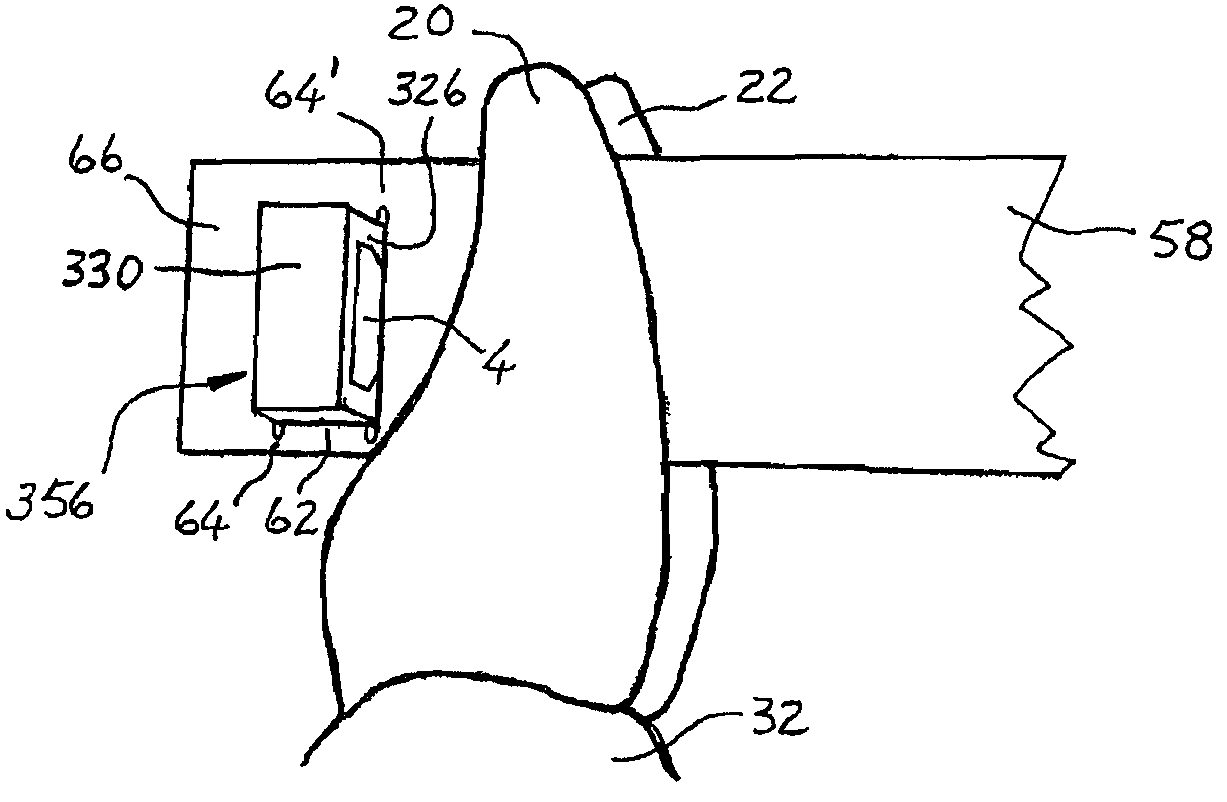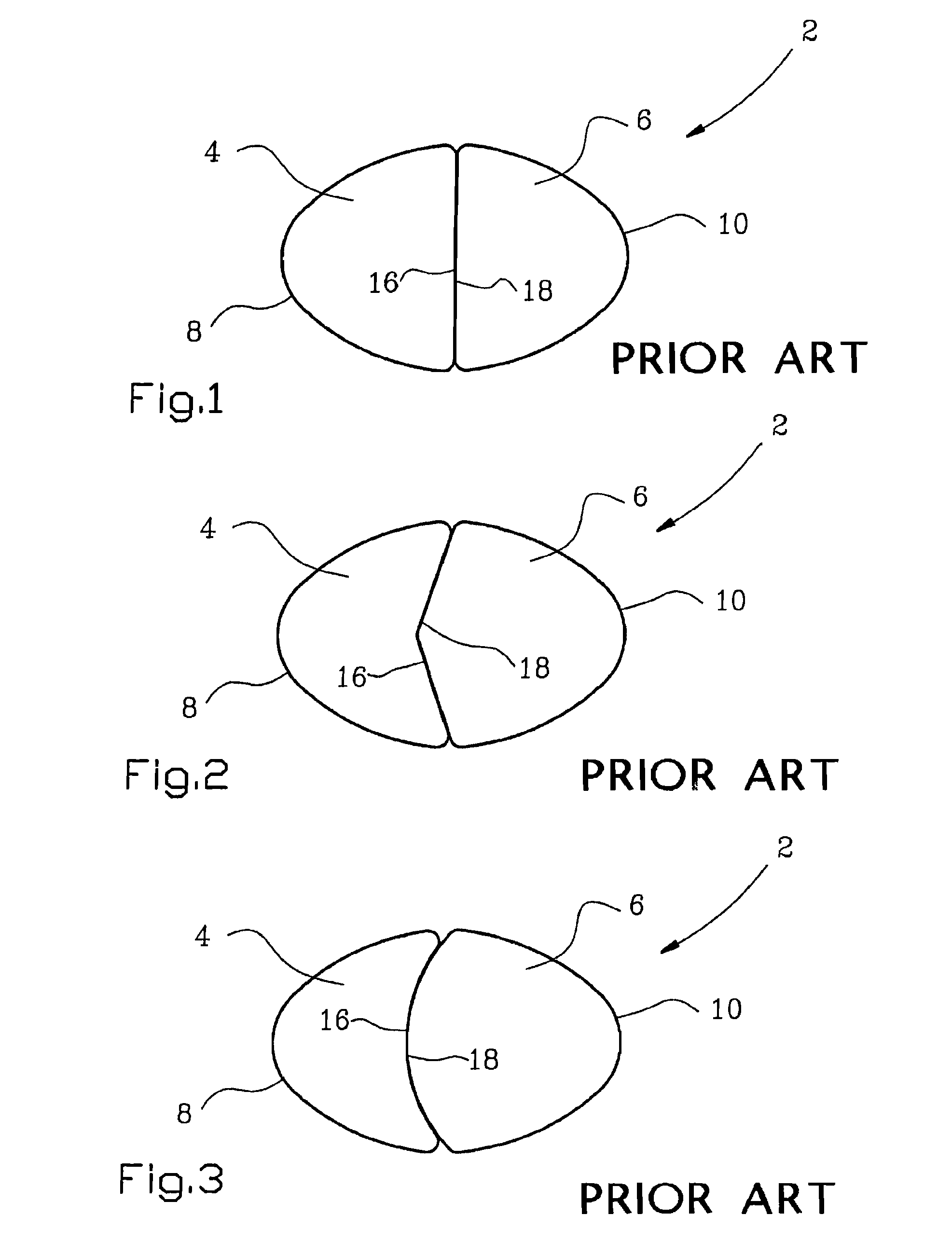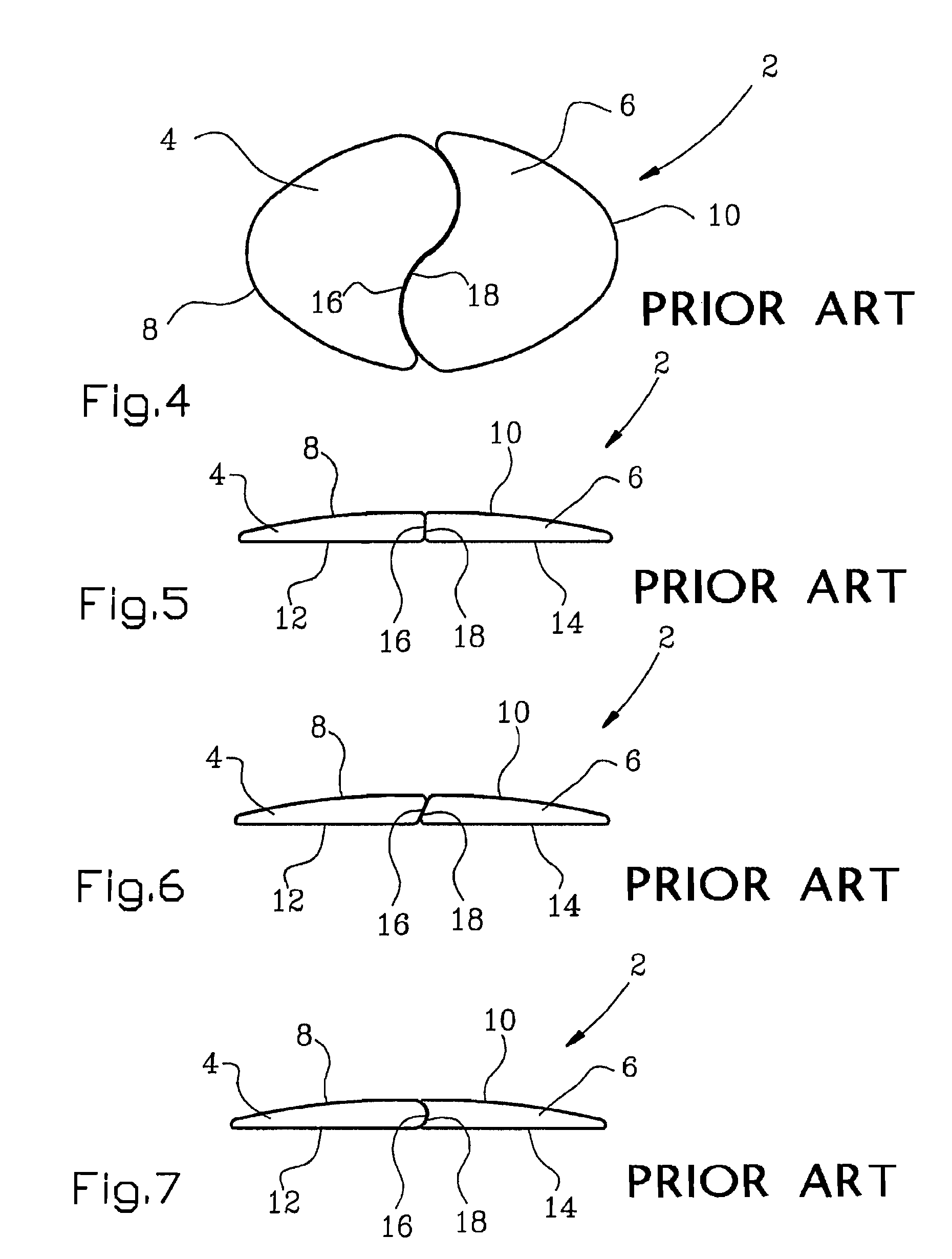Mounting device for orthodontic retainer elements and a method of maintaining said elements in place for mounting on corresponding teeth
a technology of retainer elements and mounting devices, which is applied in the field of mounting jigs for orthodontic retainer elements, can solve the problems of difficult maintenance, retainer plate may also lose its ability, retainer plate may be uncomfortable to wear, and also be prone to breakag
- Summary
- Abstract
- Description
- Claims
- Application Information
AI Technical Summary
Benefits of technology
Problems solved by technology
Method used
Image
Examples
Embodiment Construction
[0114]FIGS. 1-10 disclose pairs 2 of orthodontic retainer elements 4 and 6 according to prior art of Amundsen. Each such retainer element 4, 6 includes an oral surface 8 and 10, respectively; a dental attachment surface 12 and 14, respectively; and an approximal surface 16 and 18, respectively.
[0115]In FIG. 10, an approximal surface 16, 18 of a retainer element 4, 6 is attached on either side of a guide strip 36 according to prior art of Amundsen, and at one end thereof directly opposite to each other. As mentioned above, this attachment constellation of the retainer element 4, 6 to the guide strip 36 may cause some misalignment between the elements 4, 6 as they are released from the guide strip 36 and attached to corresponding teeth. This is a problem that the present invention seeks to remedy.
[0116]FIGS. 11 and 12 show a mounting jig in the form of a rectangular base 24, 124 comprising a dental side 26, 126; an oral side 28, 128; and a perimeter side 30, 130, respectively. Said de...
PUM
 Login to View More
Login to View More Abstract
Description
Claims
Application Information
 Login to View More
Login to View More - R&D
- Intellectual Property
- Life Sciences
- Materials
- Tech Scout
- Unparalleled Data Quality
- Higher Quality Content
- 60% Fewer Hallucinations
Browse by: Latest US Patents, China's latest patents, Technical Efficacy Thesaurus, Application Domain, Technology Topic, Popular Technical Reports.
© 2025 PatSnap. All rights reserved.Legal|Privacy policy|Modern Slavery Act Transparency Statement|Sitemap|About US| Contact US: help@patsnap.com



